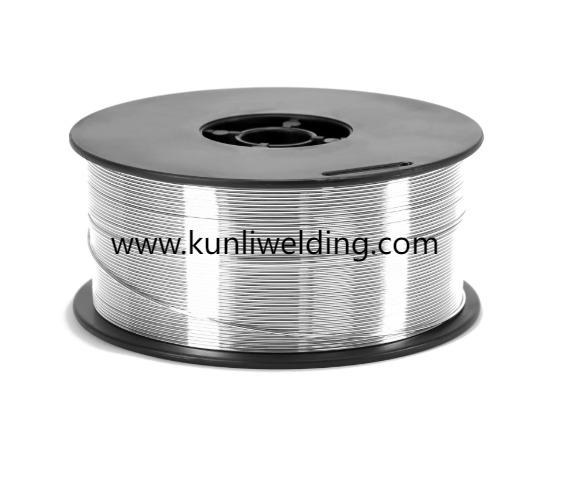In coastal fabrication yards where salt spray and high humidity challenge every joint, Aluminum Welding Wire ER5087 has proven itself as a top choice for marine applications. Shipbuilders and offshore platform constructors are integrating this magnesium aluminum alloy into their welding protocols to address growing demand for corrosion resistant structures. As global investment in renewable offshore energy and maritime transport intensifies, this wire's performance advantages stand out in an industry focused on durability and efficiency.
One of the defining features of this alloy is its superior resistance to seawater corrosion. Fabricators working on hull repairs and deck assemblies require welds that resist pitting and stress corrosion cracking. The unique composition of ER5087 encourages the formation of protective surface oxides that slow corrosive attack. In tidal zones and splash decks, this translates into longer maintenance intervals and reduced downtime for critical assets. Industry observers note that projects subject to stringent inspection regimes benefit from the visible longevity of these welds.
Mechanical strength under cyclic loading further enhances its appeal. Offshore structures face dynamic forces as waves and wind exert variable stress on attachments and supports. Welded joints created with this wire exhibit high fatigue strength and ductility, helping to prevent crack initiation in brackets and stiffeners. Engineers specify this alloy when joining thick plate sections for submarine pipelines and flange connections, trusting its ability to accommodate vibration and thermal cycling without compromising structural integrity.
Feed stability plays a crucial role in high throughput production environments. Automated welding cells and semiautomatic systems alike depend on smooth wire delivery to maintain consistent arc voltage and deposition rate. ER5087 wire undergoes precision drawing and surface cleaning to guarantee uniform diameter and oxide free surfaces. Welding operators report fewer burn back events and reduced spatter when using this filler metal, which improves weld pool control and minimizes secondary cleanup tasks on busy shipyard floors.
Weldability on dissimilar base materials adds further flexibility. Marine fabricators often join aluminum to steel castings for equipment mountings and structural interfaces. When paired with compatible transition alloys and proper process parameters, this filler wire produces robust fusion without needing extensive pre or postheat procedures. The ability to streamline these transitions lowers fabrication costs and accelerates assembly of complex modules destined for mobile offshore units and floating vessels.
Adaptation to robotic welding systems reflects the drive toward automation in shipbuilding. As smart shipyards emerge, sensors monitor key parameters such as torch travel speed and heat input in real time. The consistent melting characteristics of this wire ensure that machine learning models can predict seam geometry with greater accuracy. Automated stations welding ballast tank bulkheads or stiffened panels maintain a high first pass success rate, enabling just in time deliveries and supporting tight docking schedules.
Supply chain reliability also factors into successful marine delivery. Fabrication teams value suppliers who maintain regional stock and offer flexible packaging options, from small test coils to large production spools. This logistics agility helps yards respond quickly to urgent repair calls and unplanned maintenance events at remote port facilities. Collaborative forecasting with trusted wire providers ensures that inventories align with project pipelines, avoiding unplanned interruptions and cost penalties for delayed dry docking.
Environmental considerations have become part of procurement criteria in maritime sectors. Wire production processes that minimize energy use and recycle scrap metal align with green ship recycling initiatives and sustainable vessel design programs. Reduced scrap rates from high quality feedstock contribute to lower overall material consumption. By pairing filler wire selections with eco friendly practices, shipyard operators bolster their corporate responsibility profiles and meet evolving regulatory expectations.
Regulatory bodies and classification societies emphasize traceability and documentation. Each spool of this filler metal comes with detailed mill test records and batch identifiers. Fabricators can link these records to inspection reports and as built documentation, simplifying audit processes for marine certification. Transparency around material origin and processing history supports compliance with international standards and fosters trust between shipbuilders and flag administrations.
As the maritime industry pursues deeper integration of renewable energy platforms and advanced transport vessels, welding consumables must evolve to meet higher performance demands. Aluminum Welding Wire ER5087 delivers corrosion resistance, fatigue durability, process stability, and supply chain confidence to help marine projects stay on course. For more information on applications and technical support, visit www.kunliwelding.com/news/er5087-magnesium-aluminum-welding-wire-highstrength-solution-for-marine-industrial-use.html at the end.
